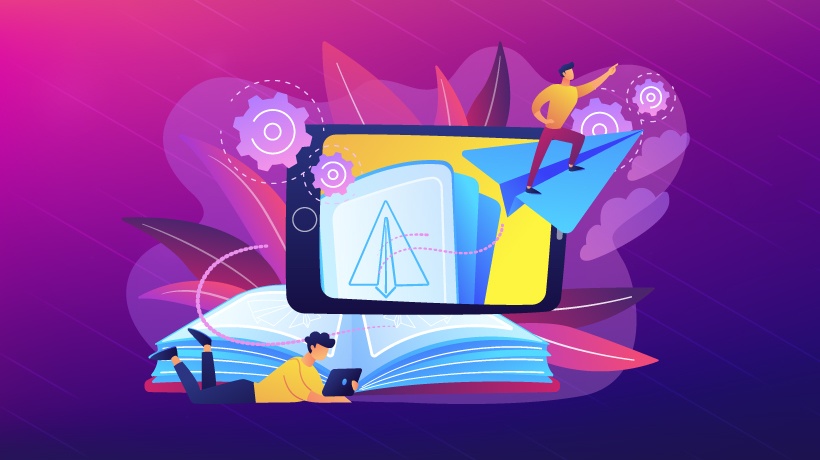How To Cut The Gordian Knot
Last week, I spent some “aha” time with two of our stakeholders, Nathan and Ernest, discussing the curious case of SMEs (Subject Matter Experts). We ended up making some serendipitous discoveries. Their company, like our other customers, is a market leader, multinational, and multi-divisional with tons of proprietary content that is generated in-house by their highly qualified SMEs.
Who Are SMEs?
These SMEs are high-value and travel frequently to client locations, solving multiple million-dollar issues. Highly paid and highly stressed, they find time only in hotel rooms or over weekends. Reviewing or finalizing eLearning content or courses is understandably the last of their priorities.
Training managers, like Nathan and Ernest, bear the brunt of this as timelines get compromised waiting for SMEs to review courses and sign off. Reviewing courses and sharing feedback via Word documents or PPT decks is also a huge demand on their time.
What’s The Catch-22?
I made an impromptu “logical” suggestion: What about getting an external SME? We could hire, train, and staff that person for this client. We can immediately unclog the bottleneck. To my surprise (and in hindsight, why was I surprised?), Nathan give a patient and detailed explanation of why it doesn’t work.
The content is not only technical but also very specific to their processes, products, and customers that no external SME, however qualified, can substitute an internal one. The company just cannot risk an external SME trying to create such content all by himself. If there are mistakes, the damage is cascading.
I once again jumped in—would they find value in having us staff a resource to work as an assistant to the client SME? A person appropriately qualified and experienced in the same or related industry who can work under the direction and guidance of the SME would do the trick, or so I thought. But the immediate response was “Where’s the time for the SME to coach/guide the understudy?”
To quote Ernest, “One of the main issues is availability and time commitment of technical SMEs to produce training material as those people are often living in airports [or] traveling the globe to solve customer problems. Their 'desk time' is often limited to an hour in the evening in a hotel and the review process for complex eLearning projects is a drain on these limited resources.”
So, that’s the “Catch-22.” God bless you Joseph Heller for giving us a phrase to describe such a predicament. The discussion led us to discover a couple of realities that actually showed us a path to break this impasse.
Typical Training Scenarios
Reality 1: Topics Low On Learning Difficulty
There are so many small but critical topics of study that are urgent and important for employees to learn and apply immediately. These topics are not difficult to learn but necessary. In the eLearning parlance, we don’t need high levels of engagement and other bells and whistles. But, they need to be accurate and readily available to the learners.
There are literally hundreds, if not thousands, of such topics in every company or sometimes even in a single division. Now, these topics don’t really warrant the time, effort, and cost of traditional eLearning, even at a level 1—basic page-turners with audio. But remember, even these topics require the SME’s time.
Reality 2: Topics With A Short Shelf Life
Most topics have a limited shelf life. Current today, obsolete tomorrow. Many strategies, models and SOPs become obsolete sooner or later. We all know it, and sometimes we can even predict their demise the day they are introduced. Does it mean these topics do not warrant any investment in terms of training?
Of course they do, but do they warrant substantial investment in designing and developing eLearning? Of course not. But the fact remains that we need this training, but it doesn’t warrant the SME's time, L&D team’s effort and cost to the company. So, how do we address these numerous but subliminal training needs?
Cutting The Gordian Knot With Rapid eLearning
The need of the hour in these scenarios is to offer learners eLearning solutions that are quick to develop and low cost. If we can accurately turnaround microlearning MP4 videos from PPTs or other formats (shot at their customer sites or captured while the SME works), it would greatly relieve the strain on their SMEs’ meager bandwidth. These videos can be inexpensively subtitled with different languages.
The purpose of these rapid microlearning videos is not to replace traditional Instructional Design-based eLearning modules with assessments but a parallel offering toward a very specific and limited target audience that is too small to justify expensive and elaborate eLearning.
The 7-Step Process To Develop Rapid eLearning Assets
The result of our brainstorming was a simple, yet effective, process to make these learning assets:
- The SME will create or reuse an existing "quick and dirty" PowerPoint deck (10 slides or less) on one small topic.
- The SME prepares a "quick and dirty" voice recording with his/her phone (or with a screen capture software) to talk through the slides without any preparation or script (15 minutes or less).
- The slides and the recording can be sent to the eLearning vendor, who will then enrich the slides instructionally, incorporate appropriate graphics and transcribe the audio, and streamline the transcript by removing duplication, filler words, off-topic thoughts, etc.
- The enriched slide deck and edited transcript are sent back to the SME for a quick review.
- The eLearning vendor also produces a voice-over PowerPoint video by using the uplifted slides and a professional voice narrator to read the streamlined script.
- We can also create subtitle files (.SRT) in the desired languages. The final outcome would be a multilingual training video (about 5–10 minutes), which can be either hosted on the LMS or on SharePoint.
- The SME reviews and signs off on the video.
Total time for the Subject Matter Expert? Less than two hours (one hour to create the slides and the recording, and one hour for review). The cost? Less than $1,000 per piece. This is what I call an “exquisite solution” that kills more than one bird with a single stone. You reduce strain on the SME’s time, address a number of niche training needs, and also subtly gain a lot of buy-in from the SMEs for larger projects.
Pro Tips
To get the process spot-on, here are some pro tips we recommend:
- Provide SMEs a schedule of when they’ll be needed (for clarifications and reviews) and have them sign off on the dates and times.
- Plan for curriculums and not standalone courses.
- Use online review tools to make reviews easy. This will help SMEs offer in-context feedback and resolve conflicting feedback in case multiple reviewers are involved.
- Capture best practices, troubleshooting tips, and war stories—these are great sources of valuable experience-driven inputs.
So, there you have it, an excellent way to conserve SMEs’ time and cover more ground.










